The finance industry is big…
And I mean really big.
Heck, the personal finance industry alone is estimated to have a $2.7 billion transaction value by 2023.

What does that mean for you as a financial copywriter?
That’s there’s plenty of money to make.
Or alternatively, if you own a financial business, this means that there’s going to be more and more customers for you to acquire.
However, your financial sales copy needs to be in tip top shape if you want to make the big bucks.
That’s why I’ve put together this quick guide to financial copywriting.
Ahead you’re going to learn how to write copy for financial products, see real examples, and grasp timeless copywriting techniques that’ll transform your results.
1. Find your niche based on experience
You want to be a big fish in a small pond.
Not a small fish in a big pond.
What I mean is that you should focus on a particular niche to lessen competition, and become a notable writer in that space.
Honing in on one area allows you to become an expert, so I suggest narrowing down an industry based on experience.
Here are some financial writing niches for inspiration.
Day trading
Actively trading stocks, ETFs, or other financial instruments on a regular basis is considered day trading.
It is done as a source of immediate income versus investing for long term wealth.
It’s also a very ruthless industry.

Only 1% of all day traders that begin will profit consistently and remain after 5+ years.
It’s easy to approach it like a get rich quick scheme, but there are heaps of things you need to know.
This includes technical analysis, fundamental analysis, trading psychology, indicators, and more.
If you have day trading experience, consider niching down and focusing on it as a financial copywriting area.
You will be able to write copy for day trading programs and websites.
Look at Warrior Trading, for example.
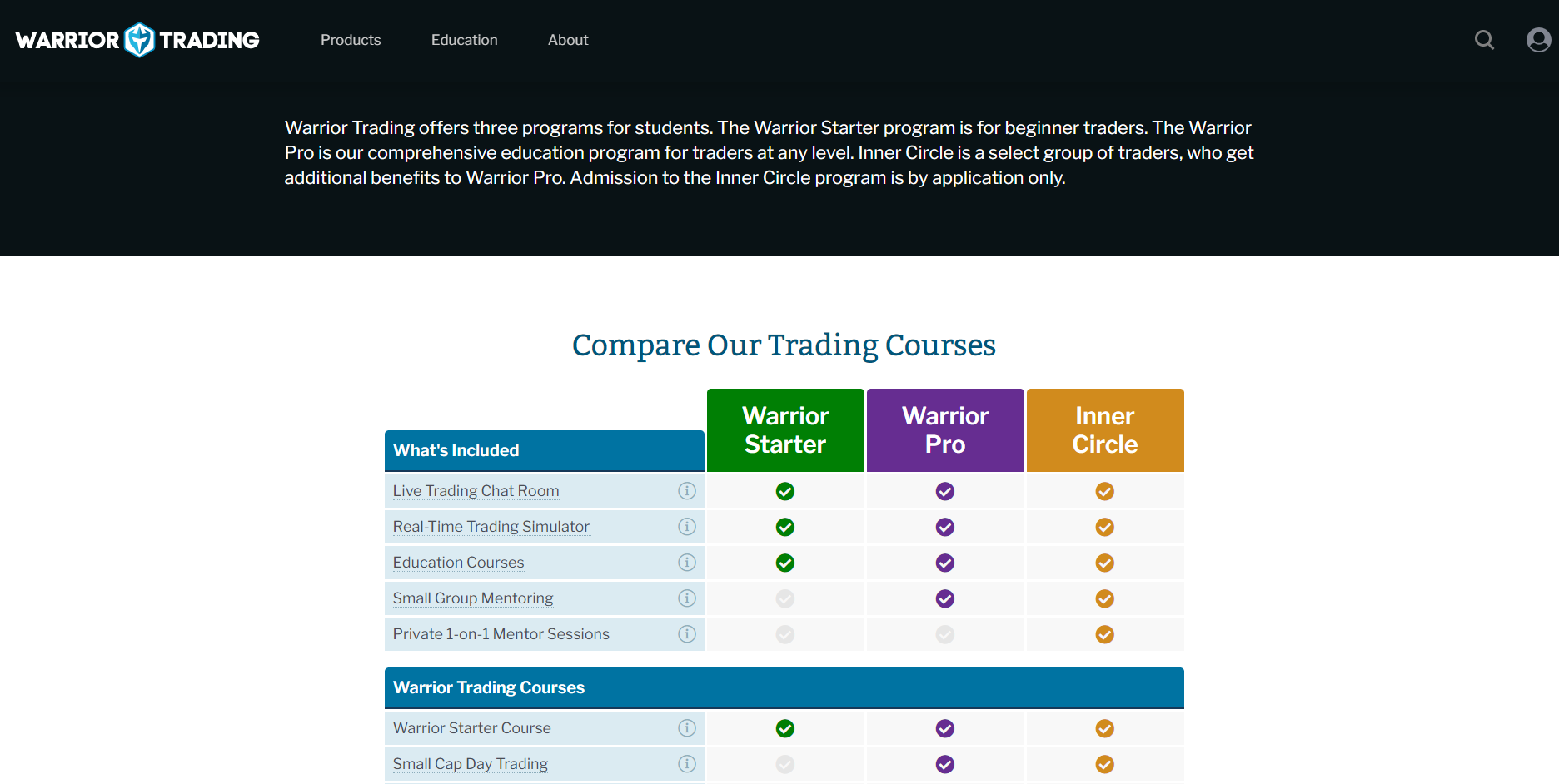
You could be producing copy for these types of sales pages, and the royalty fees would be insane, as day trading courses are usually very expensive.
Day trading is also a continually growing industry, passion, and hobby.
This means that you could have potential clients for life!
Personal finance
Not everybody day trades.
Not everybody invests in the stock market.
But everybody has personal finances to take care of.
That’s why it’s an evergreen industry to break into as a financial writer.
Personal finance entails everything about budgeting, saving, spending, building credit, and other general financial fields.
It applies to the average person trying to improve their financial situation and independence.
The best part about this industry is that we all have experience with it whether you realize it or not.
You already pay bills, generate income, and have finances to take care of.
This means that you have knowledge which can be shared!
Credit and debt
Most of us have been there.
You know — using credit cards inappropriately and getting into debt — just the usual.
Just look at the US debt levels.
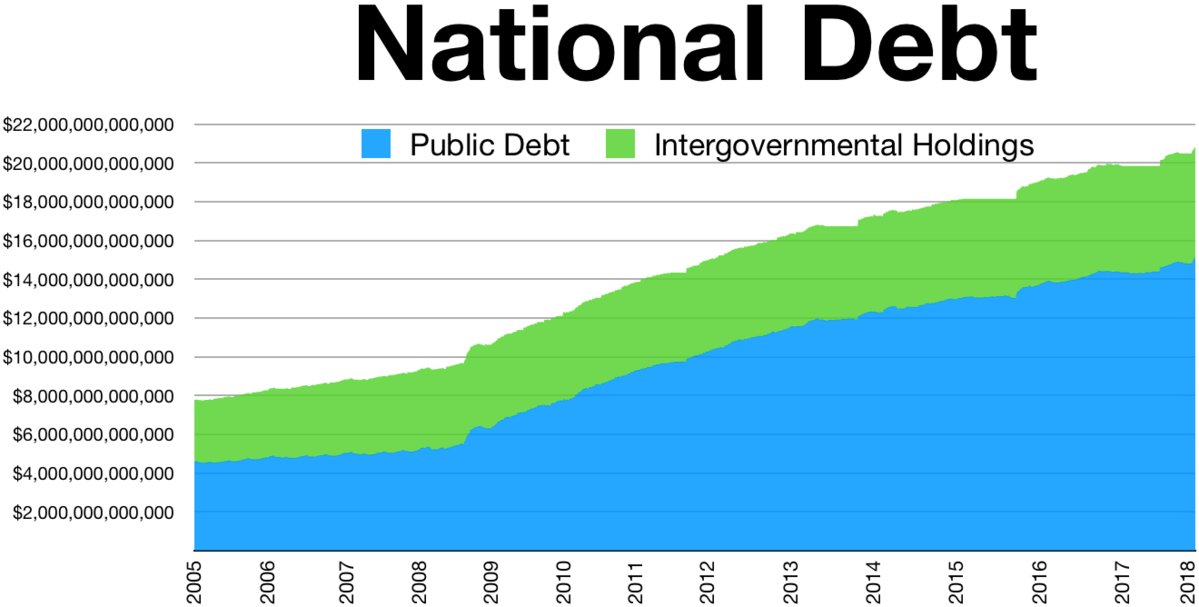
They’re steadily climbing and not going down any time soon.
Most people will land themselves in debt via mortgages, credit cards, and other types of loans.
It’s the nature of how many products and industries are set up.
Debt isn’t always a bad thing, however.
If you take on a mortgage to generate income from a new rental property, it makes sense.
But on the flip side, some people do get into bad kinds of debt they can’t pay off.
The debt industry is a great niche to get into as a writer because it isn’t going away any time soon.
Those seeking relief are also feeling very emotional and urgent, which creates an excellent recipe for selling something to them.
I also like to think of it as one of the more empathetic niches to enter. Your copy can genuinely help people get out of debt, enjoy life again, and start down a new path.
With that out of the way, let’s get down and dirty with some finance writing tips.
2. Tell customers what they want to hear
There’s the age-old copywriting technique of features versus benefits.
I believe it’s one of the most important strategies to understand because ultimately it tells customers what they want to hear.
Let’s look at an example.

This is a Forex course called WyseTrade.
As soon as you land on the homepage, the copy “5 Keys That Will Instantly Improve Your Trading” instantly sums up everything.
Sure, an interested student wants to learn about technical analysis, good indicators, and all that jazz, but what do they truly desire?
To be a better trader.
Next time you go to produce copy, ask yourself “What does the customer really want?” and it will always give you a better perspective on what to write.

Scrolling down the page, WyseTrade nails this principle once again by explaining that their course will teach customers:
a refined step-by-step program designed to shorten the learning curve for traders of all levels. We have simplified hard concepts into an easily understandable format so that anyone can start learning and applying these strategies right away.
This shows that they really understand their target audience, as getting past the complex nature of trading is often the biggest hurdle for new traders.
By explaining the course simplifies advanced concepts into simple and actionable advice, they resolve this worry in the reader’s mind.
3. State exact numbers and data
Being vague won’t get you anywhere in the world of financial writing.
Seeing as there’s no industry that’s more about numbers than finance, you have no excuse not to offer specific data.
Let me explain.
Put yourself in the shoes of a person interested in purchasing a day trading course. Which of the two headlines do you think would entice you more on a sales page?
- The Beginners Day Trading Program
- The 5 Steps That Made Me $243,187 Day Trading in 12 Months
Obviously the second.
Why is this?
Simply because it’s specific, thanks to the use of numbers.
This ensures the reader understands exactly what to expect to get out of the product.
They don’t have to wonder how much potential income will be generated, how long it takes, or other concerns.
It’s all immediately solved in the headline before any other copy is read.
However, this strategy can be used anywhere in financial copywriting, whether it’s in the heart of a blog post, used in a YouTube video description, or elsewhere.
Here’s a simple example of using it in a blog post title:

Similarly, notice how this Amazon FBA course cites precise sales numbers on their landing page.
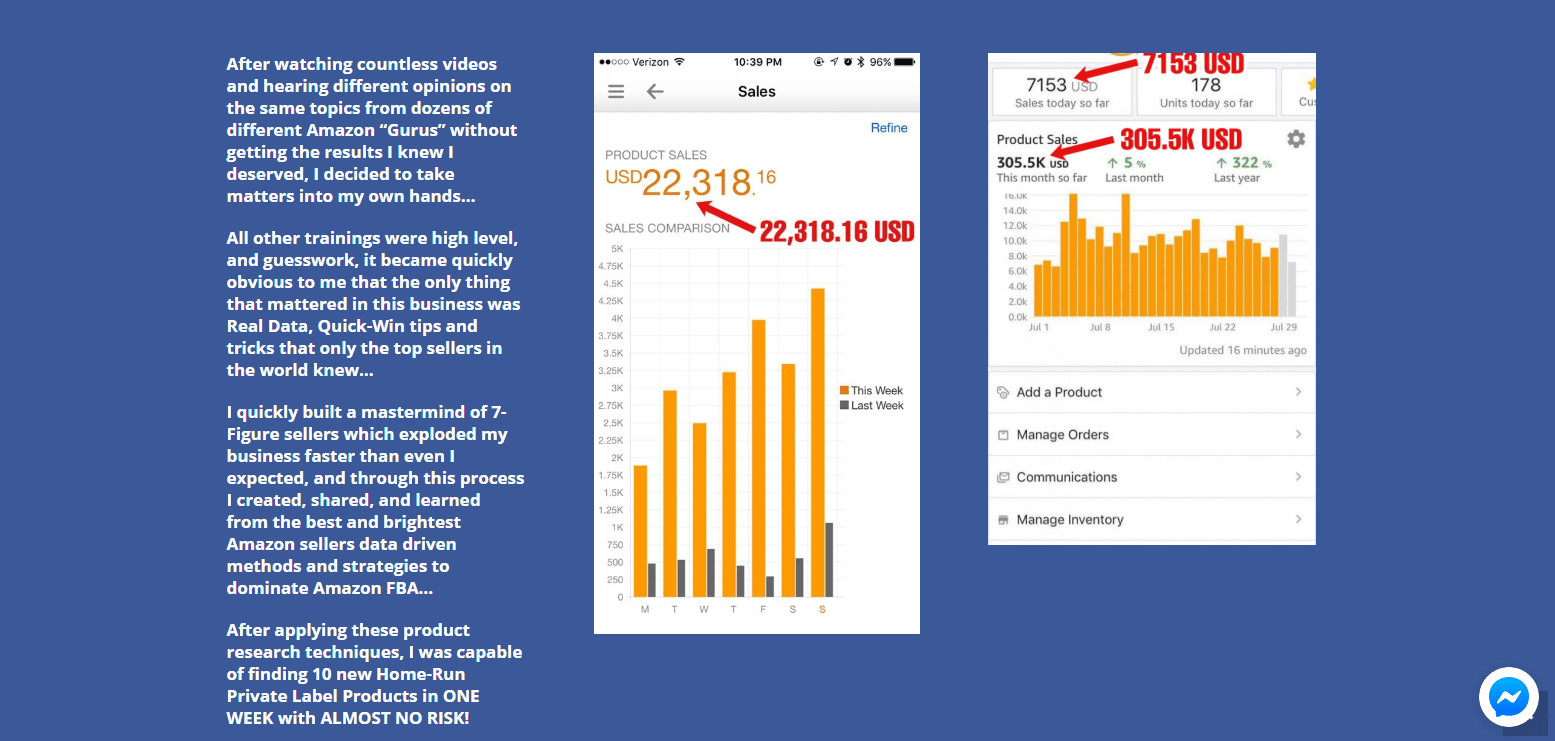
It helps clear up any uncertainty and objections because one concern on a customer’s mind will be something related to the return they’re going to receive.
4. Don’t be afraid to brag
Social proof is everything in business.
It helps build trust with customers while showing you really know you’re stuff.
That’s why Invesco wasn’t afraid to display how much assets they have under management on their website.
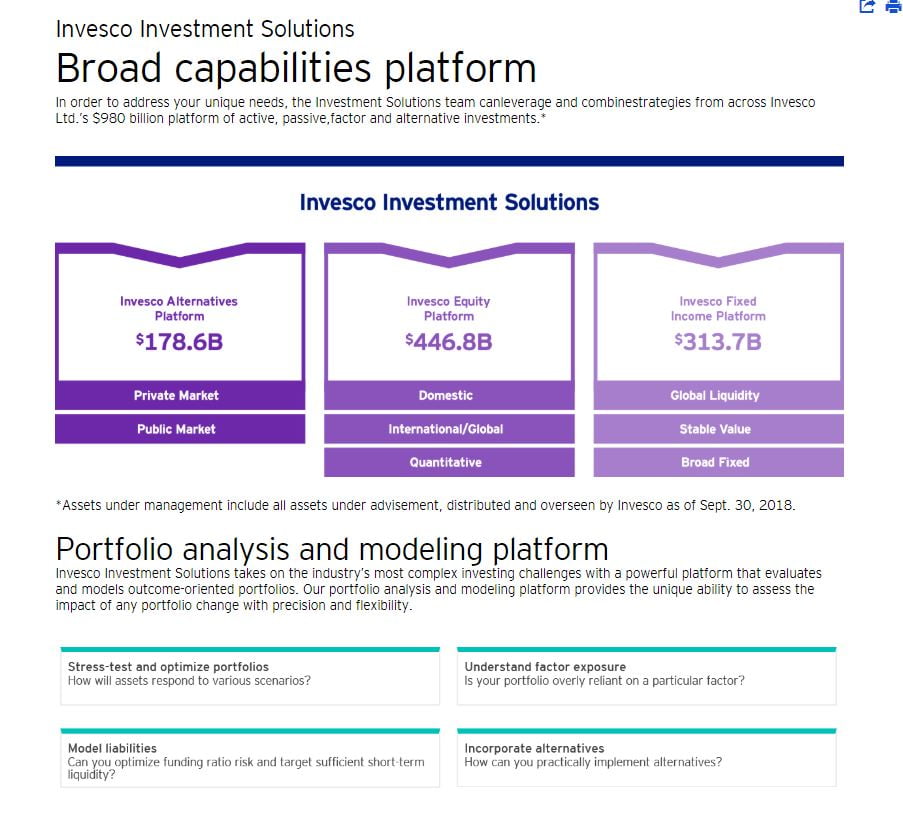
If you went to a fund’s website and they had a few million under management, you’d be clicking off really fast, right?
Put yourself in your customer’s shoes. They want expertise and experience especially when it comes to money.
That’s why you need to gas yourself up as much as possible. State any impressive returns, clients, or case studies that would help increase conversions.
I see a lot of financial companies that don’t display these kinds of things on their sites, landing pages, etc and it’s a shame.
They’re shooting themselves in the foot and missing out on sales!
Don’t be one of them anymore.
5. Educate customers on your lingo
If your customers don’t understand financial talk, they’ll become confused and less likely to become a paying client.
That’s why you need to do one of two things:
- Explain everything in layman terms. Skip the technical jargon if possible so you can reach a wider audience.
- Continue to use the technical jargon but explain what it means so there’s no confusion.
Look how Learn-to-Trade, a day trading course, offers a glossary section so users can learn the industry’s terminology.
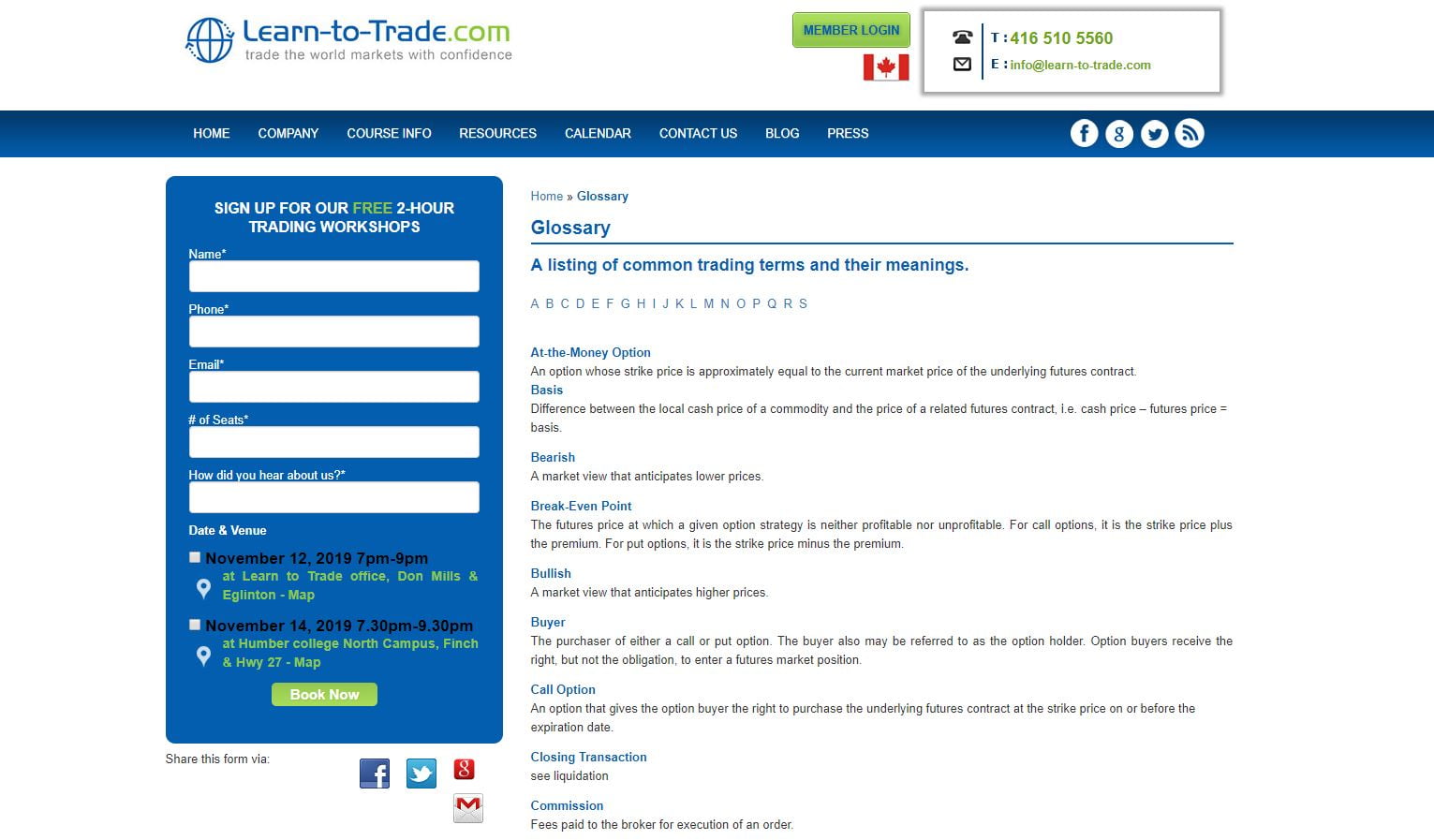
You can add a glossary section like this one your website or simply explain any technical terms as you go.
Make sure to read my article on technical writing to learn more about this technique.
6. Order copy in a logical sequence
Sales copy needs to be executed in the same sequence that customers would be thinking.
Look how TD Canada orders the information on their home buying page perfectly:
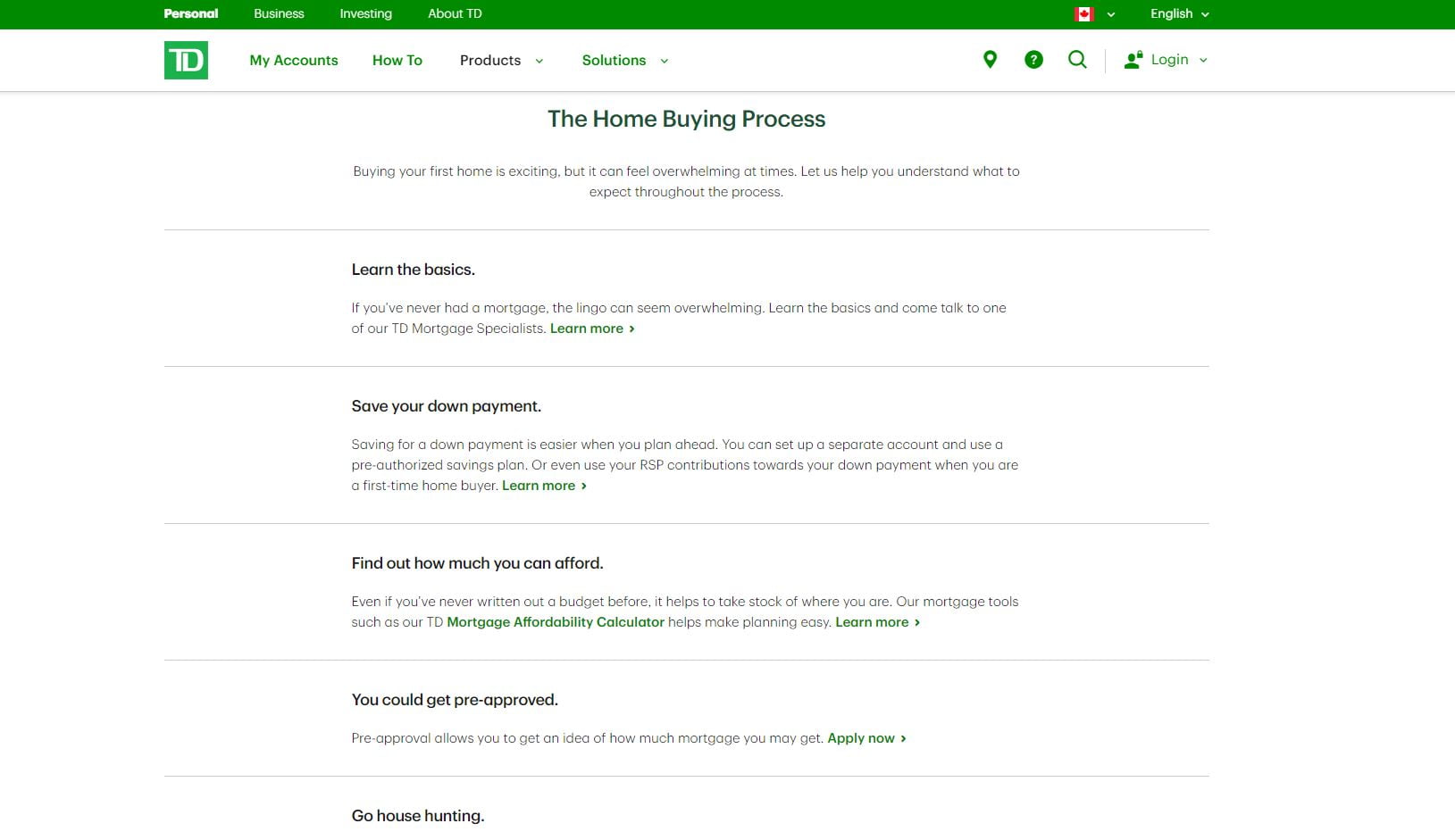
It begins with understanding the basics before moving onto down payments, affordability, getting pre-approved, and house hunting.
This shows they know their customers like the back of their hands.
Do you think home buyers would want to go house hunting before getting pre-approved or understanding what they’re jumping into?
Of course, not!
Ordering the content in this fashion leads readers through everything they’re thinking and have questions about before finally getting to the sale, which is TD’s mortgage services.
Don’t forget to check out my article on content marketing for banks if you’re enjoying today’s post.
Wrapping up financial copywriting
Finance is one of the best industries to be in as a copywriter or business owner in general.
Whether it’s personal finance, trading, debt relief, or other fields, anything related to wealth will be around forever.
The key is to first niche down and focus on one area. This can be based on your own personal experience, education, or interests.
Then you need to tell customers what they want to hear while writing financial sales copy.
This means telling them they will be financially independent, be their own boss, be debt free, or whatever it is that they are truly after.
I also suggest being as detailed as possible in sales copy through numbers, data, and statistics.
These add more depth to the content, and also helps readers understand the product or information better.
If you’re looking for a financial copywriter, feel free to reach out to me at any time and I’ll help grow your project.
What’s your #1 financial copywriting tip?














